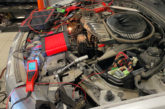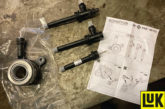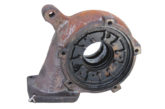
Part of a technician’s skill is to prevent a customer’s vehicle from breaking down in the first place. In the case of cold weather, flat batteries are the greatest danger, but to prevent this from happening technicians need to advise motorists on careful battery maintenance, as Exide Technologies explains…
Batteries lose a lot of their cranking power in cold weather, which is why battery failure is most common in winter. Poorly performing batteries often continue for months, still able to start the engine, but then fail the first time they are exposed to a cold night on the roadside. Unexpected battery failures are expensive and inconvenient, but they can be avoided with the right approach to maintenance.
Those batteries that are more than four years old are particularly susceptible – they already have reduced capacity because of aging, and they are more likely to have issues cranking the engine in lower winter temperatures if only partially charged. Car batteries are known to work best at a temperature of 27˚C. By the time the temperature falls to 0˚C, even a fully charged battery has lost around a third of its starting power.
Longer journeys are key
Explain to your customers that short journeys may not be enough to keep the battery in a healthy state of charge. The alternator ideally needs at least 10–12 miles on the motorway to fully recharge the battery, so those short trips to do the groceries may not be enough.
In fact, smaller trips are often bad for the battery, as they may not offset the energy cost of starting the engine and powering on-board electrical equipment during the trip.
Keep the battery charged
If your customers don’t have a reason to go on longer trips, a great alternative can be to use a charger, such as the Exide 12/7 or 12/15. They are designed to also work as a maintenance charger once the battery is recharged, which preserves its lifespan and keeps it in a proper state of charge. Advise customers to recharge their battery at least every 4–6 weeks if their vehicle is off the road.
If customers don’t have access to a charger, encourage them to visit your workshop. You can test the battery using an Exide EBT965P, and have a recharger on hand in case it’s needed. If the voltage is lower than 12.5V, measured with key off at battery terminals, the battery must be recharged straight away.
Consider the type of battery
Exide’s Premium Carbon Boost is good at handling extreme weather. It supposedly recharges up to two-times faster than a conventional battery and offers 30% more starting power. Fast recharging means it reaches a healthy state of charge quickly, reducing the risk of battery failure and vehicle breakdown. The company also provides AGM and EFB batteries with exceptional electrical performance that are specially designed to support the start-stop powertrain. Of course, regardless of what battery technology you fit for your customers, the right approach to maintenance is the best way to preserving battery lifespan.
Battery maintenance advice for your customers
- Make longer journeys of at least 10 to 12 miles regularly to keep the battery in a healthy state of charge
- Recharge the battery every four to six weeks to keep it in optimum condition if the vehicle is off the road
- Do not let the battery voltage drop below 12.5V
- Consider high-performance batteries as they can offer reduced risk of breakdown









